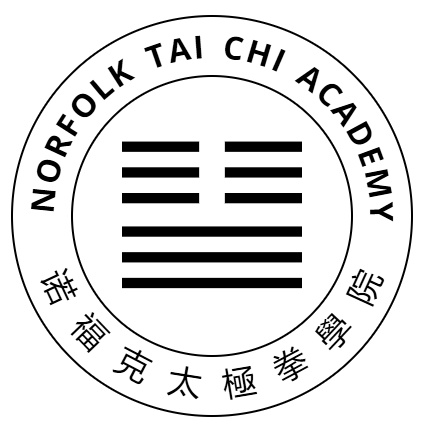What is the meaning of this movement – what would a Chinese person understand by its name? The word ‘needle’ might remind them of the legend of the Monkey King, who for a weapon used a magical iron pillar, twenty feet long, that he could shrink to the size of a needle and tuck behind his ear. This iron pillar, the legend says, was used by Great Yu to “fathom and fix” the depth of the rivers and seas when he brought the Yellow River under control (the river used to flood repeatedly). This is an historical event that took place 4000 years ago; the Chinese refer to it as Great Yu Controls the Waters (大禹治水 ). This magical weapon was found for Monkey by the Dragon King and Queen, who lived at the bottom of the sea.
But perhaps we are pushing a needle to the bottom of the sea, rather than picking one up? This may be the correct explanation, but the sea may not be where we first think it is.
In this view the sea would refer to the ‘sea of qi’ 氣 海 , in other words the lower dan-tien (the energy centre in the belly). There’s even an acupuncture point here with this name (CV6). The bottom of this sea 海 底 is not the seabed, but the pelvic floor. Martially, it seems that the move was originally used to attack the cavity between the hip and the groin. If the strike was not sufficient to disable the opponent, one continued downwards in order to push the opponent to the ground.

Here is Yang Cheng-fu demonstrating Needle at Sea Bottom in his book The Essence and Applications of Taijiquan. Yang describes using the movement to break free from a grab of one’s right wrist at the end of the previous ‘Brush Knee’. The opponent is pulled first towards you and then down, uprooting him. “The movement’s intent is like a needle probing the bottom of the sea”. There is no mention of striking with the hand, but we should remember that the book was written and published quite late in the development of Tai Chi: in 1931. By this time several movements had lost their original purpose; a classic example is White Snake Shoots out Tongue, whose original meaning was only preserved in oral transmission.
The way Mr Moy performed Needle at Sea Bottom himself was similar, although with a narrower base so that the weight remained in the back foot. However the way he taught it was a bit different. To beginner and intermediate students he showed a table stretch with straight legs, designed to stretch not just the legs, but the back and spine:

The coccyx stretches back and the head forwards, lengthening the spine. Additionally there is a rounding across the shoulder blades and across the back of the pelvis.
To students who were more flexible Mr Moy taught the version he himself performed in which he allowed both knees to bend. This clearly won’t stretch the tendons in the leg, but it creates more stretch across the back of the pelvis, opening the sacro-iliac joints.
Remembering that Tai Chi is an “internal” art (內家 ), one further possibility comes to mind: perhaps the sea here is neither a figurative ocean, nor the ‘sea of qi’ of an opponent, but the one inside ourselves?
Further references
- Jim McClanahan: The Magic Powers of the Monkey King’s Iron Staff
- Sara Olsen: Needle at Sea Bottom
